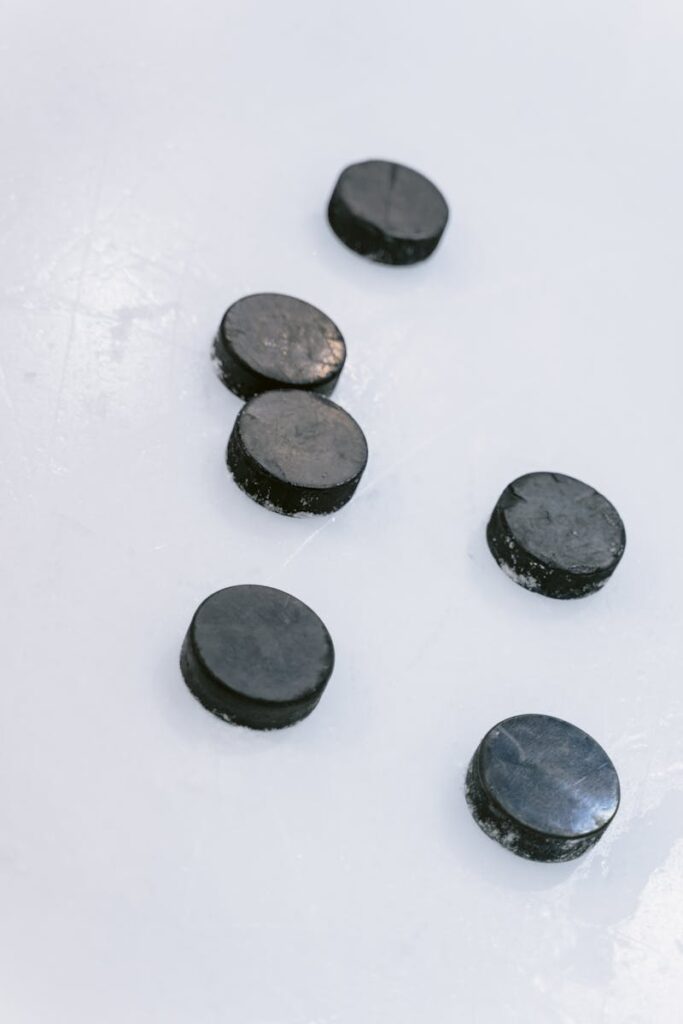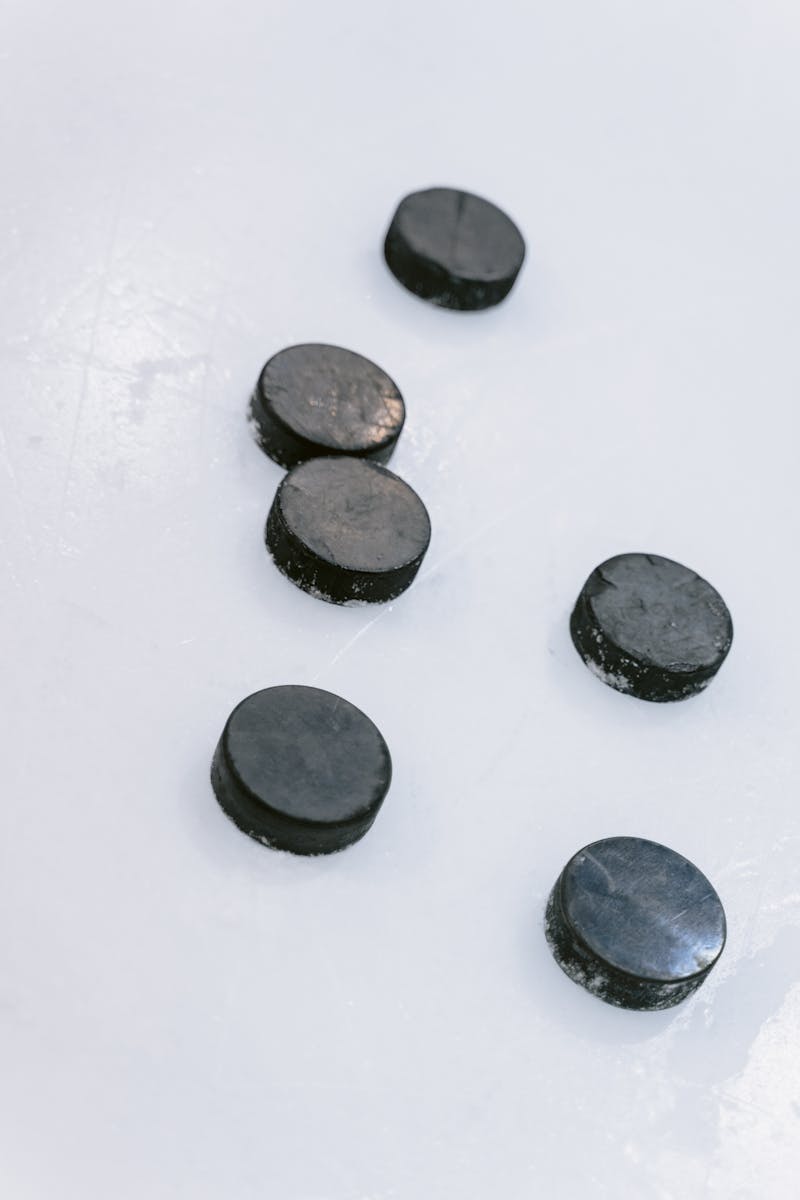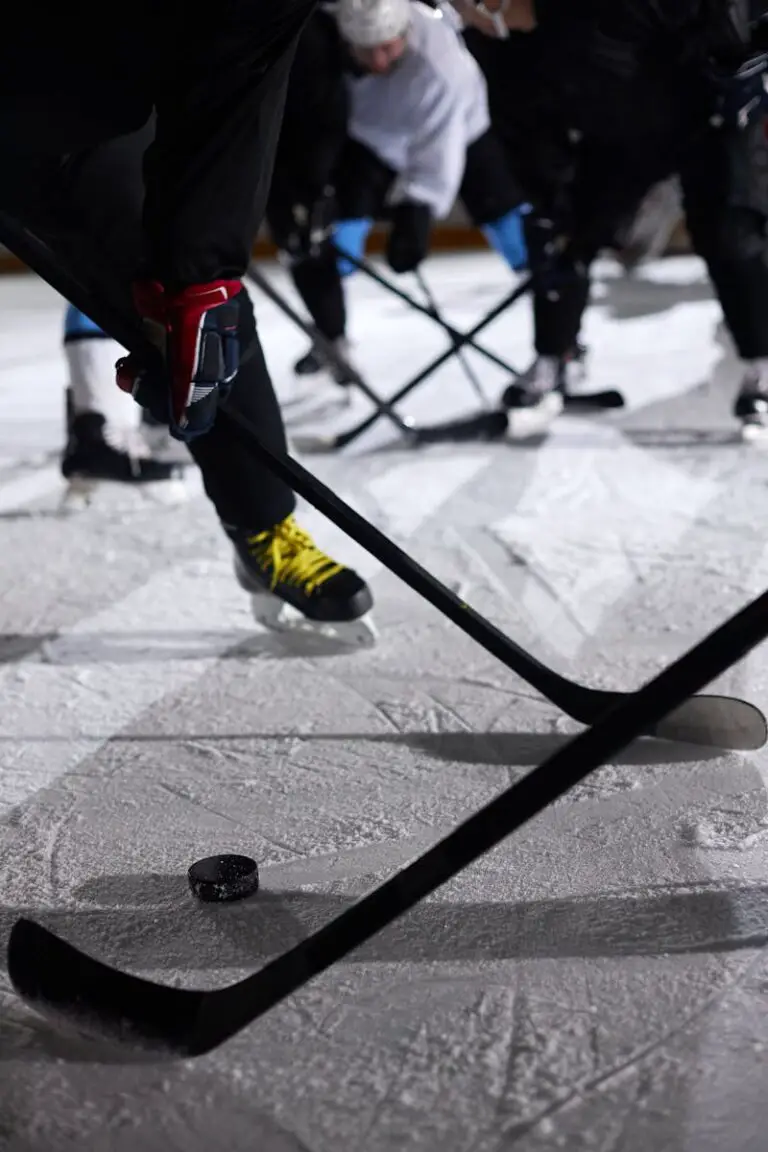Exploring Raw Materials in Hockey Puck Production
Hockey may be a sport of finesse and precision, but at its core, it’s a game of power. It’s the strength behind a slapshot, the force that drives the puck across the ice, and the resilience of the disc as it ricochets off the boards. What’s often overlooked is the silent partner in every game, the unassuming proxy for all that power — the hockey puck.

In this deep-dive, we’ll uncover the vital role raw materials play in the making of hockey pucks and how these materials affect everything from gameplay to the environmental footprint of everyone’s favorite icy pastime.
Rubber as the Primary Material
At its simplest, a hockey puck is just a piece of rubber – but not just any rubber. The kind that slides across the rink, that endures bone-crushing collisions, and withstands the force of a hundred-mile-per-hour slapshot.
Properties of Rubber: The natural and synthetic rubbers used in puck production are selected for their consistent weight, bouncing characteristics, and friction coefficient. These properties ensure that the puck moves predictably and responds as players have come to expect.
Manufacturing Process of Rubber Pucks: The birth of a puck involves a combination of molding, vulcanization (a process that makes rubber more durable), and finishing treatments. It results in a precision weight and size, crucial for professional play. The rubber’s uniformity is especially important as any variation could lead to unpredictable bounces or slides, potentially changing the outcome of a game.
Alternative Materials
While rubber remains the most common material for pucks, innovation has brought about composite materials that promise to enhance performance and durability.
Composite Materials: Pioneered by companies like the official NHL puck provider, these pucks use a mix of rubber and specialized materials, such as thermoplastic elastomers, to create a product that is lighter, livelier, and more resistant to wear and tear. Composites can be tailored for specific playing conditions and to match players’ preferences for how the puck feels and handles.
Impact on Performance and Durability: The use of composite materials in pucks can lead to a faster game, allowing for harder, more accurate shots, and can increase visibility on the ice. However, with these advantages comes the question of adaptability, as players who have trained with traditional pucks may need time to adjust their technique.

Environmental Considerations
The global push for sustainability is influencing all industries, including the sport of hockey. The raw materials used in sports equipment must now be examined through an environmental lens.
Sustainable Sourcing: Rubber production, especially natural rubber, contributes to deforestation and habitat destruction. To mitigate these impacts, some manufacturers are seeking certification for sustainable sourcing practices, ensuring that the rubber used in pucks is sourced responsibly.
Biodegradability and Recycling Options: While rubber is not biodegradable, it is highly recyclable. End-of-life pucks can be repurposed as surfacing materials or other rubber products, thus reducing the environmental impact of discarding used pucks. Some companies are also experimenting with biodegradable materials, which could revolutionize puck production in the quest for more eco-conscious sports equipment.
Quality Control and Performance
In the high-stakes world of professional sports, consistency is king. Any change in the puck’s performance could be disastrous for players and teams relying on split-second reactions and muscle memory.
Consistency in Material Selection: The reliability of the rubber puck is due in part to the meticulous standards of material sourcing and production. Even the smallest variations in the raw rubber compound can lead to significant differences in the final product. Every effort is made to ensure that players are accustomed to a consistent puck experience, whether it’s during practice or the Stanley Cup Final.
Impact on Game Performance: Inconsistencies can lead to debate among fans and players alike. A puck that bounces irregularly or feels different in a player’s hand can tilt the scales in an unexpected direction, potentially altering the result of a game or season.
Future Trends in Materials
The future is always on the horizon, and for the hockey puck, it includes the potential for groundbreaking advancements in material science.
Innovative Materials Research: With ongoing research into new materials, future pucks could be lighter, faster, and offer unprecedented performance. Self-healing materials, for instance, could make pucks that are resistant to the wear and tear that comes with the game, ensuring that their performance remains top-notch over countless hours of play.
Potential Advancements in Puck Technology: Advancements in material technology could also lead to ‘smart pucks’ that can provide real-time data on their location and trajectory, impacting training methods and in-game strategies, as well as producing a more engaging fan experience.
Conclusion
The hockey puck may seem like a simple piece of rubber, but it embodies years of material science, testing, and innovation. From its humble beginnings as a lab experiment to the carefully crafted game essential we know today, the hockey puck reflects the diligence and dedication of manufacturers, scientists, and players to the integrity and future of the game.
The continuing exploration of raw materials in hockey puck production promises continued enhancement of the game we love. And as the sport evolves, so too will the partnership between puck and player – a partnership built on the foundation of the game’s most essential material.






